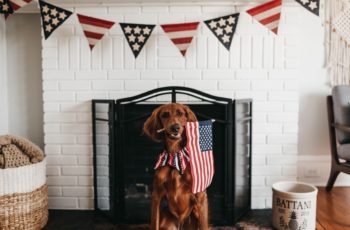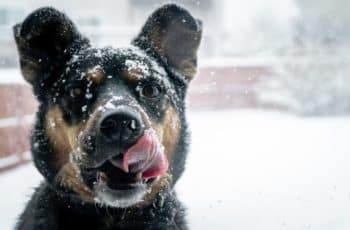You need loads of patience when potty training. Even if your furry friend is trying their hardest, they are still going to mess up and have accidents in the house.
Instead of buying cartons of Clorox wipes every week, you can try anticipating when your puppy will need to go to the bathroom by creating a schedule.
This printable schedule is based on your dog’s age, mealtimes, and water drinking. We also have a puppy bladder control chart that can help you understand how long your pup can hold his urine & when you should take him out.
If you try to organize your dog’s day around this schedule, you’ll notice that you will be cleaning up pee much less!
For Puppies Under 16 Weeks
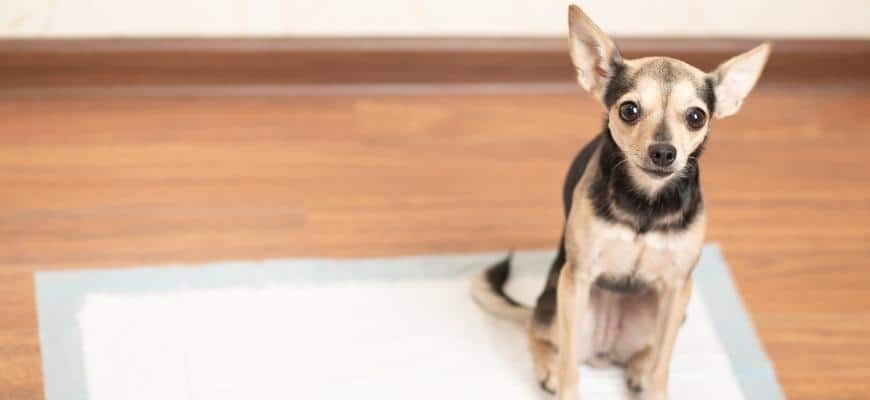
According to the AKC, dogs are able to hold their urine & bowel movements after 16 weeks of age. So, we recommend that you begin housetraining your canine companion once they reach their 16-week birthday.
Before this landmark, make sure you start looking out for subtle signs that your dog is about to go to the bathroom. Also, try to have a designated potty spot with a puppy pad, just so that your dog gets used to the idea of a separate potty area.
Even if you have a 3-month-old puppy, you can also begin a positive association of peeing in the potty area. Whenever you see your dog is about to pee, use a verbal command like “Make” or “Go Potty.” Then, reward your puppy with enthusiasm and/or treats.
When my dog was around 3 months old, we had a corner of the house where we placed a bunch of puppy pads & newspaper in. This was the designated pee area that we trained my pup to go potty in.
Whenever he urinated in that corner, we would say “Good Boy! Go Potty” and later reward him with a treat. We noticed it was much easier to potty train him later on because he was already familiar with the “Go Potty” command.
These tricks will help build the foundation of actual potty training later on.
For Puppies 4-6 Months
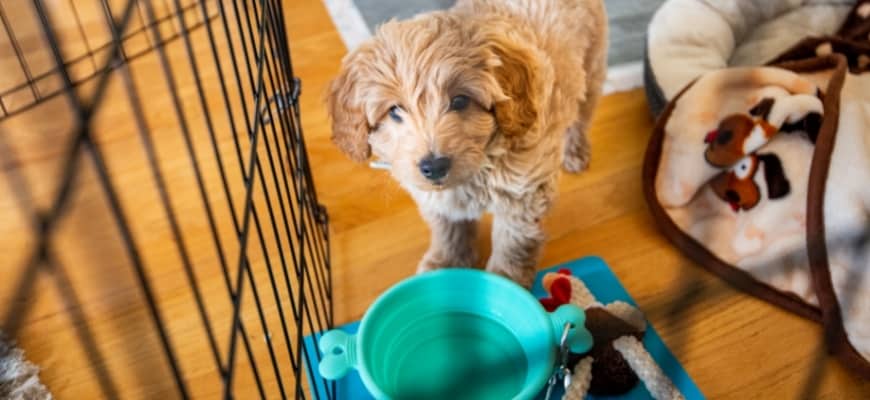
Ideally, a 6-month-old puppy should be having 3 square meals a day. You can plan a consistent schedule with bathroom breaks around this.
According to this schedule, your pup won’t have to hold his bladder for more than a couple of hours.
At Night:
The American Kennel Club has a really helpful way to measure how many hours your dog can go without a bathroom break – just take the age of your puppy in months and add 1. For example, if your dog is 5 months old, then he can last 6 hours without a bathroom break (5 months + 1).
So, if your dog is under 6 months, you might have to wake up a couple of times in the night to let him relieve himself.
Wake Up:
It’s super important that you let your dog go to the bathroom immediately after he wakes up as a morning ritual. If your dog has basic potty training skills, he usually won’t wet himself at night unless he has an overly full bladder or weakened bladder capacity.
To avoid this issue, take your pup out right as he wakes up. This could be around 6 am. Unfortunately, pups need to start their mornings early to relieve themselves.
If you notice that your furry friend isn’t peeing on your trip outside, then consider a bout of quick exercise to get the blood flowing & to stimulate the GI tract.
Use commands like “Make” or “Go Potty” as he relieves himself so that he will be able to go on command later on.
First Meal:
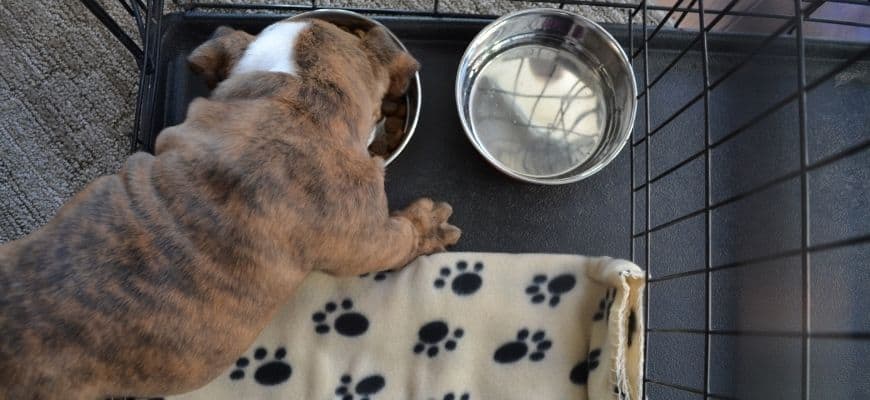
A good way to ensure that your dog is getting enough water is by adding it to his puppy food. So, if you add water to their breakfast, you will definitely have to take them for a potty break right after.
The post-breakfast bathroom break could be at around 9 am. After your dog finishes up his breakfast, wait for only 10-30 minutes before taking them outside.
Food & water goes through your dog’s system super fast, so it’s important to ensure that you give him plenty of trips to relieve himself.
Second Meal:
After lunchtime, make sure you take your pup out to a spot where they can go potty. This could be around 12 am, so your dog will only have to hold his bladder for roughly 3 hours.
Post-Playtime:
Playing can stimulate your dog’s GI tract, which means that you might have to take him out for a walk right after a game of time. This could be at 2 pm.
Make sure you give them enough water as they play, so they aren’t dehydrated.
Post-Nap:
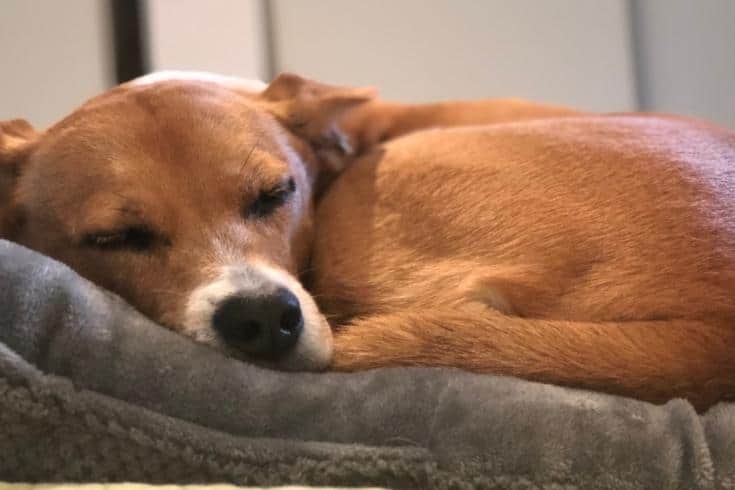
Did you know that puppies can sleep for 18-20 hours a day? This means that your dog will definitely need a bunch of cat naps throughout the day, which also means that you need to schedule regular trips to a proper spot for urination.
A key time for a bathroom break is right after a nap to avoid any accidents inside the house. Look for classic signs that your pup is about to pee so that you can anticipate when your dog is going to have an accident.
Third Meal:
Your dog’s third & final meal could be at around 6 pm, and you should take him on a bathroom break right after this meal.
The last meal should not be less than 4 hours before bedtime. Otherwise, your dog may wake up at night to go to the bathroom.
This should also be the final time that your dog has access to the water. If you give them water within 2 hours of bedtime, it will be pretty hard for them to control their bladder throughout the night.
Final Potty Break:
The most important potty break is right before your dog goes to bed. If your dog’s bedtime is scheduled for 11 pm, then you should take him out at around 10:40 or 10:50.
Try not to play with him too much during this potty time; not only will this excite him & make it hard for him to sleep, but it might also cause his GI system to pass a motion.
For Puppies 6-12 Months
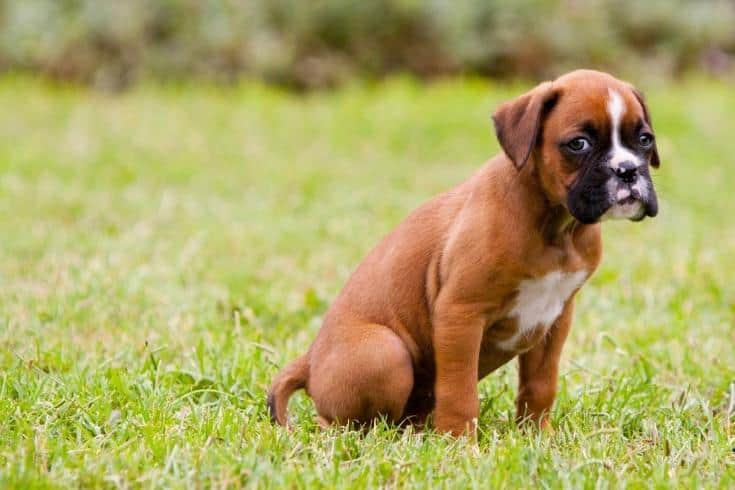
After your pup reaches the 6-month landmark, it’s recommended that he moves on to only 2 meals a day. This means that his potty schedule will also slightly change.
Your dog’s sleeping schedule will also differ, as he will need fewer naps throughout the day.
However, it’s good practice to continue to take your dog out of the house for a bathroom break once he wakes up & for a break before bedtime.
First Meal:
The first meal of the day can be at around 10 am. This meal must be quickly followed by a bathroom break at around 10:30 or 11 am.
Playtime Break:
This second potty break may be during your dog’s exercise time or right after his midday nap. Regardless, it’s important to have another break after playtime, in between meals, so your dog isn’t struggling to hold on to their urine.
This playtime break can be at around 2 or 3 pm.
Second Meal:
The second and last meal of the day should be at around 6 or 7 pm. It can be a little later because your dog will have better control of his bladder overnight. Try to limit their water intake to around 2 hours before bed to avoid any accidents.
When Will My Puppy Be Potty Trained?
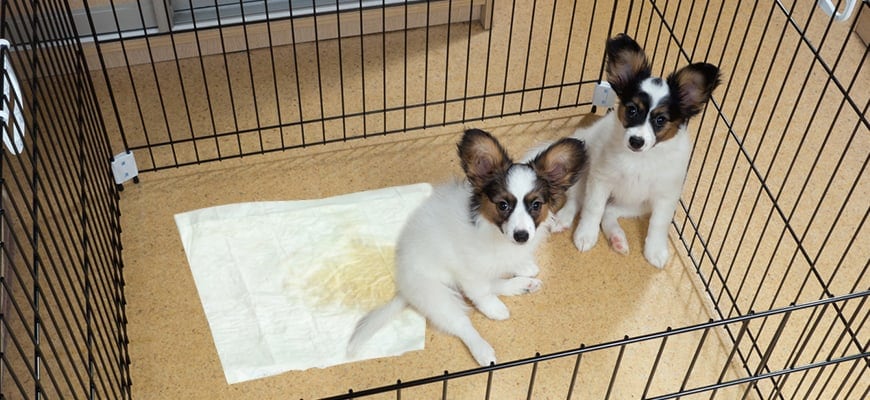
Every puppy is different & learns at a different pace. Some dogs are a lot more receptive to training and can be potty trained after only a few months.
For some dogs, it may take up to a year to stop having accidents in the house.
It’s important to remain patient and work with your dog’s personality type & training style.
Also, start training them from a young age; you can even try clicker potty training or potty bell training when your dog is under 16 weeks & defecating inside the house on puppy pads!
The sooner you build the association that peeing in the potty area is good behavior, the easier potty training will be.
Tips to Remember
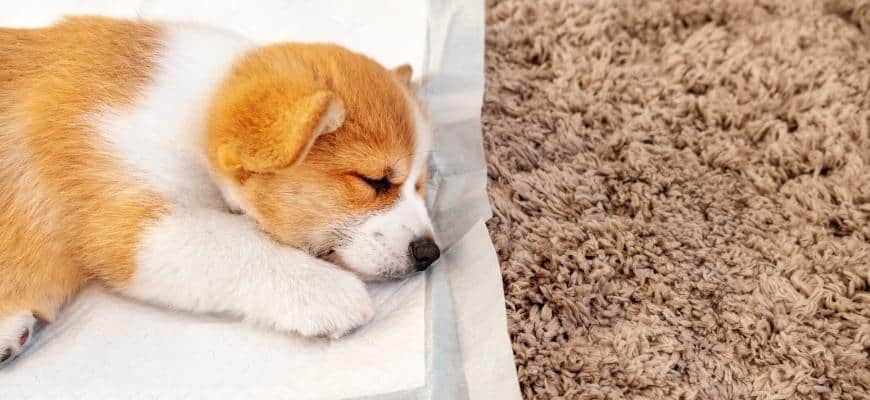
Potty training can be a difficult process. Here are some helpful tips that can reduce the number of messes you have to clean up in these challenging months.
- Monitor water intake
It’s very important that you watch when your dog drinks water. Don’t leave the bowls out 24/7, especially after dinner. This could make your dog’s urination schedule super unpredictable & hard to work around.
So, only allow water drinking 30 minutes to an hour before the scheduled walk. However, make sure that your dog is getting enough water throughout the day by encouraging drinking during playtime, mealtimes, and when he wakes up.
Make sure that your dog isn’t holding his pee for long bouts of time, as this could actually be a danger to puppies’ urinary health. - Remain Calm
It’s very likely that your dog will have a few accidents in the house. If this happens, just use a stern vocal command like “No” or “Stop” and pick up your dog and take them out of the house.
Don’t scream or shout, as this will only confuse your pup further. - Be Patient
Potty training is a long process & even the most obedient puppy is bound to mess up a couple of times. You need to remain patient & never punish your dog for an accident. Keep using positive affirmations & don’t lose your temper. - Consider weather
While implementing a consistent schedule, consider the weather you’re experiencing. Check out these tips to potty training your pup if you live in an area with an icy winter.
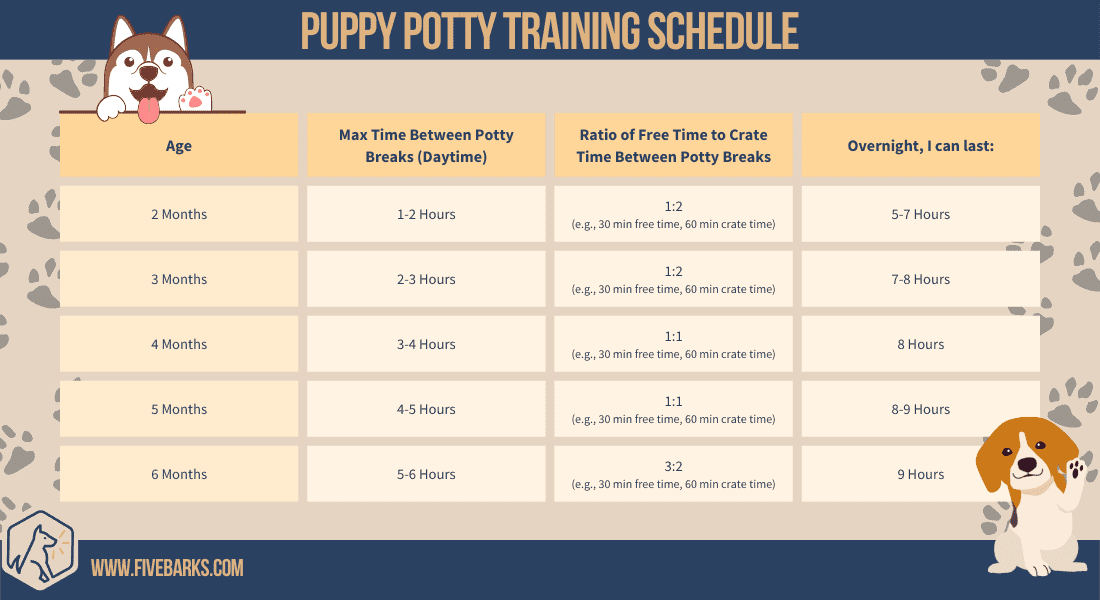
Commonly Asked Questions
Here are some questions frequently asked by puppy parents.
What is a good potty schedule for a puppy?
The most important thing to remember when making a potty training schedule is to schedule bathroom breaks about 30 minutes after mealtime or drinking water.
A puppy’s digestive system moves pretty fast, and it takes less than an hour for your dog to pass a motion. Also, playing can stimulate your dog’s digestive system, so you might need to schedule a potty break right after.
How long does potty training take?
The process of potty training is totally dependent on your dog’s response to training. Typically, potty training only takes around 6 months.
However, if your dog isn’t receptive to behavioral training, it can take up to a year.
It’s important to remember that it’s fully possible your dog will have an accident even after they are potty trained. So, you need to make sure you have lots of patience & a bed that is easy to clean!
How can I make the potty-training process faster?
To speed up the process of potty training, you need to figure out your dog’s motivator. You can try using food, words of affirmation, or playtime & see what your dog responds best to.
Make sure to remain patient & don’t yell at your dog if they pee inside. This could traumatize your dog, & they could start hiding when they go potty because they will be scared of your response.
What is the hardest dog to potty train?
There are some dogs that are a bit harder to potty train. Breeds such as Beagles, Chihuahuas, and Terriers are supposed to be harder to potty train because they are a bit more stubborn.
However, it isn’t impossible to train these dogs; you just need a little bit of patience! The breed of your dog doesn’t 100% dictate your dog’s personality. So, don’t feel distraught if your pup is one of those breeds because it’s definitely possible to train them as long as you remain calm.
Conclusion
Potty training is a messy & challenging process. As puppy parents, we are constantly looking for ways to make this huge investment of time a little bit easier.
If you are housebreaking your pup, try implementing this puppy training schedule to help anticipate when your dog will need to go potty & when to take him out.
If you found this article helpful, share it with another puppy parent. Leave a comment below if you have any questions or other tips.
Thanks for reading!
Bonus!
Here is a downloadable Puppy Potty Pattern Tracker! You can create your version of the timelines to suit your routine.

